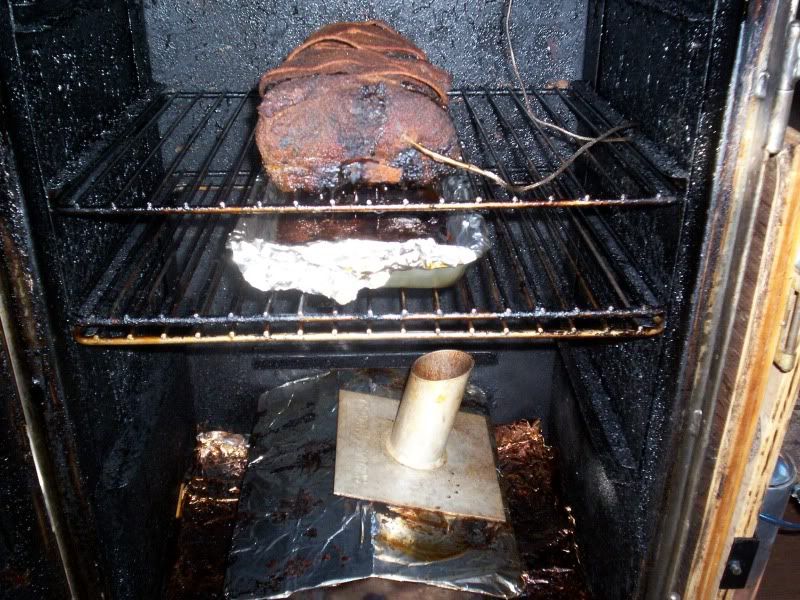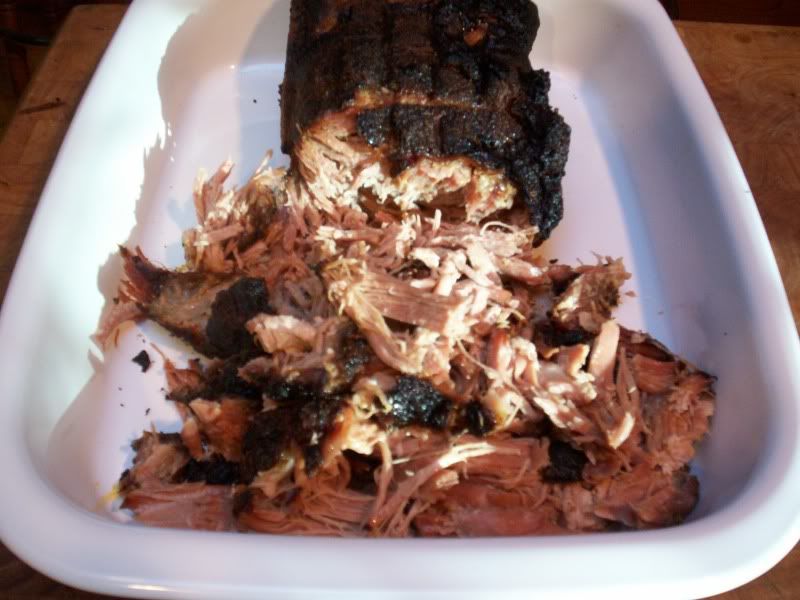Ingredients:
1 - 8 lb. pork butt, wet aged 14 days after purchase. Slaughter date unknown
Brine - 12 oz. by weight non iodized salt, 8 oz molasses or ¾ cup
(Sal. 70% @ 60° pH 5.4)
Rub - seasoned salt, paprika and brown sugar to taste
Reservoir – ½ cup apple juice and ½ cup Aloha Shoyu soy sauce
Smoker – Cookshack Amerique 66
Wood – 4 oz. hickory chunks.
Procedure:
Removed butt from packaging and rinsed well under cold water and patted dry.
Injected with as much brine as it would easily hold. Trussed with butcher twine and brined for 12 hours
Patted dry again then applied as much rub as it would hold. Allowed it to set for one half hour, and then applied more rub. Placed in smoker on upper 1/3 rack with a drip pan under roast on next lower shelf. Inserted remote thermometer and set reservoir on smoker box and closed door. Set the temperature to 200°, and started smoke.
During the long smoke the temperature swing was monitored. The temperature swings ranged from 208° - 193° throughout the entire smoke resulting in a 15° swing.
The door was opened at the 18 hour point to verify the temperature reading. The temperature was verified and the juices flowed when thermometer was removed. No mop was applied at any time.
Did the reservoir add flavor?
Not dramatically but I would think there was a layer of flavor in there somewhere.
Conclusions:
Start weight – 7.95 lbs.
Finish weight of usable meat – 4 lb 4 oz.
Weight loss – 43%
Cooking time – 45 hours @ 200°
Finish temperatures ranged from – 175° near bone to 180°
Color - Darker than normal
Bark – Very dark to black, almost crunchy
Pull ability – East to pull, bone pulled clean
Moisture – Dryer than normal except near bone where it was moist
Flavor – A full richer flavor throughout the entire piece without being complex
The altitude of 2300 ft. probably added a few hours to this cook.
Pros:
Exceptionally good flavor
Although a vinegar and mustard finishing sauce was available, no finishing sauce was needed
It was a fun experiment
Cons:
Long cook time
Dryer than normal
Will I do it again?
Definitely yes, although for special occasions only
Lessons learned:
I believe I overshot the prime time to remove the roast. Next time I will start checking for doneness at the 165° range which would have been around the 24 hour area in this case. I also learned that there is a time and temperature correlation to the meat pulling easily; I don’t know what it is though. Will take more tests to try and figure that one out.
Questions:
I can’t figure why it took so long to come to temp.



For more information on aging pork.
http://www.thepigsite.com/arti...pact-on-meat-quality
http://www.ncbi.nlm.nih.gov/pubmed/20416685